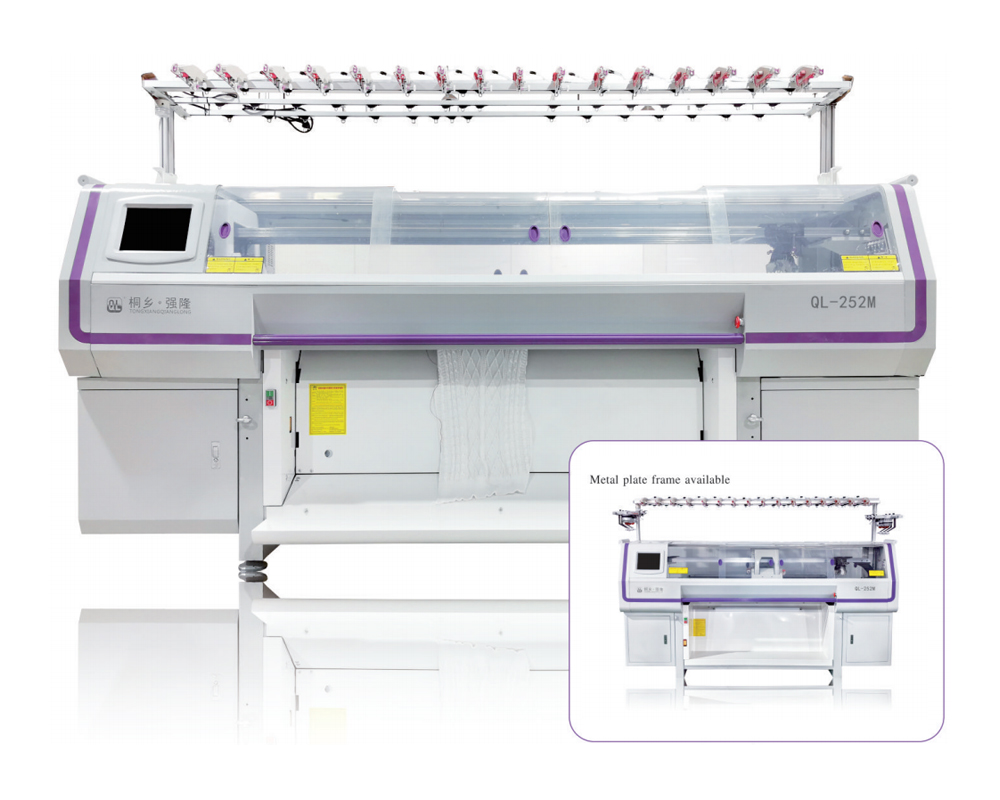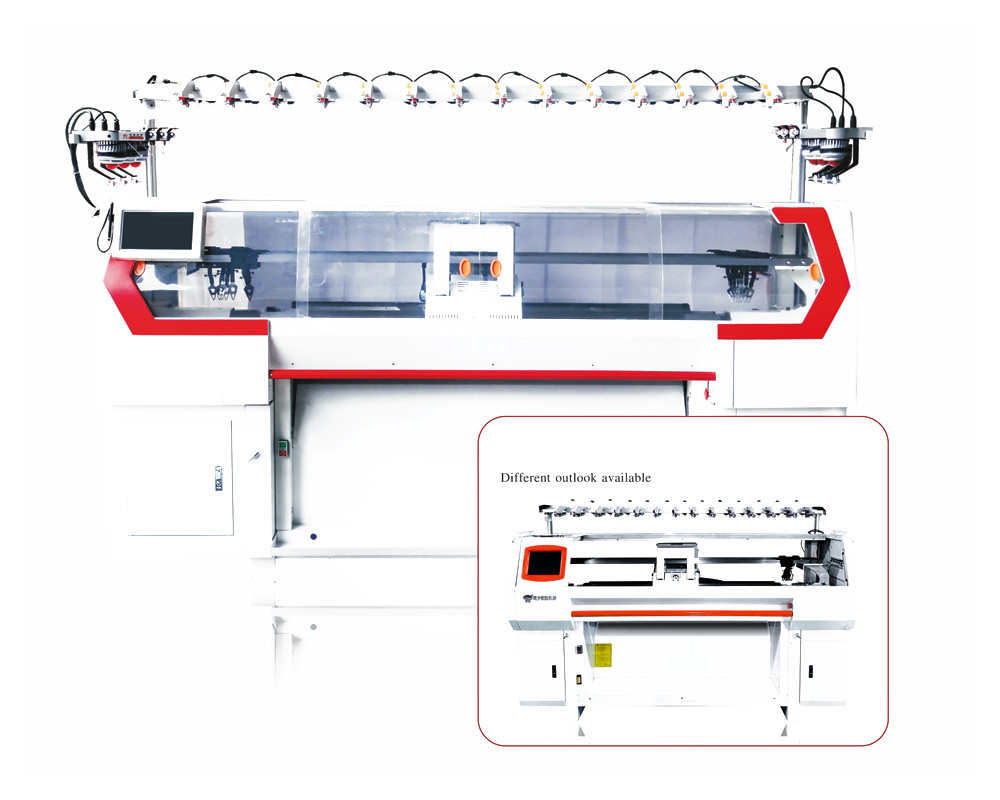Tongxiang Qianglong Machinery Co., Ltd. is high-tech China wholesale computerized flat knitting machine manufacturers, specialized in designing, developing, and manufacturing Knitting Machinery..
Introduction: What "Single System Computerized Flat Knitting" Means for Manufacturers
A single system computerized flat knitting machine (SSCFKM) is a programmable knitting platform that controls one needle bed (single system) with a computerized carriage to execute complex stitch patterns, shaping and yarn feeds. These machines are used widely in small-batch production, product development and for specialized components in larger manufacturing lines. This article focuses on the practical, high-value applications where SSCFKMs deliver the most benefit — from fashion knitwear to technical textile components — and explains the design, yarn, and process choices that make each application successful.
Apparel Production: Sweaters, Cardigans and Fashion Knitwear
One of the most common uses for single system flat knitting machines is apparel — particularly sweaters, cardigans, pullovers and other garments where stitch definition and shaping matter. The computerized controls enable automated shaping (waist, armhole, shoulder), jacquard patterning, intarsia colorwork and targeted textures like rib or tuck stitch, producing ready-to-sew panels or whole-piece knit garments depending on machine capability.
Why SSCFKMs are suited to knitwear
They offer precise stitch control to create complex motifs without post-production printing, reduce material waste through exact shaping, and shorten sampling cycles because designers can upload patterns and immediately produce prototypes. For boutique brands and made-to-order services, SSCFKMs provide the flexibility to change designs daily without tooling costs.

Accessories and Trims: Collars, Cuffs, Hems and Decorative Panels
Beyond whole garments, SSCFKMs excel producing high-value trims and accessories. Collars, cuffs, waistbands, decorative panels and pockets can be knit with integrated features (elastic cores, reinforced ribs, or embedded piping). Producing trims on the same machine as body panels simplifies color matching and hand-feel consistency.
Practical tips for trims
Use core-spun yarns for elasticized trims, select higher-twist yarns for clean edges, and employ waste-yarn feeders for provisional loops when linking or sewing is planned. Many shops knit trims in flat form and link them using automated linking machines or manual linking—this reduces cutting waste compared to cut-and-sew elastic attachments.
Seamless Panels and Whole-Garment Knitting in Small Runs
Although fully tubular or circular whole-garment knitting is more associated with circular machines, SSCFKMs are capable of producing large, single-piece panels that reduce sewing operations. For small-batch or custom fits, producing near-seamless panels (front/back joined at minimal seams) increases comfort and perceived quality while lowering labor on finishing lines.
When to use SSCFKMs for near-seamless garments
Choose SSCFKMs when design complexity (colorwork, shaping) is high and production volume is low-to-medium. This approach is ideal for limited-edition collections or made-to-measure pieces where sewing costs would otherwise dominate unit cost.
Home Textiles and Soft Furnishings
Single system flat knitting machines are also used to produce elements of home textiles: cushion covers, throw panels, decorative bed scarves and textured upholstery panels. Fancy stitch structures—cable, tuck, and piled effects—are easily produced to add value to home-product ranges without dyeing or printing.
Design considerations for home textiles
Use bulkier gauges and chenille or boucle yarns for tactile products; select tighter gauge and stabilized backings for pieces intended for upholstery to reduce stretch in service. Panels can be produced to final dimensions with integrated hems or allowance for overlocking to speed hand-finishing.
Technical Textiles: Filters, Reinforcements and Medical Components
Beyond fashion and home goods, SSCFKMs contribute to technical textile applications where knit structures provide functionality: filtration media, textile reinforcements for composites, wearable medical supports, and sensor substrates. The ability to vary loop density, include multifilament or monofilament yarns, and incorporate composite yarns (metallic, conductive, elastic) makes SSCFKMs valuable for niche technical production.
Examples of technical uses
Knitted filter panels with graduated porosity, knitted preforms for composite layups that conform to molds, and tubular knit medical braces with graduated compression can be produced on flat machines with appropriate yarn selection and finishing.
Prototyping, Sampling and Rapid Product Development
A core application for SSCFKMs is rapid sampling. Designers and technologists use these machines to test stitch patterns, gauge changes and color placements quickly. Digital programming reduces sample lead time from days to hours, accelerating design cycles and reducing time-to-market.
Workflow improvements
Integrate CAD files directly into the machine control software, keep a library of stitch modules and yarn profiles, and maintain a small inventory of standard yarn carriers to enable on-demand samples for buyers and photogenic marketing content.
Education, Research and Maker Communities
Universities, design schools and maker spaces use SSCFKMs to teach knit structure, textile engineering and digital fabrication. These machines are approachable for students learning CAD-to-textile workflows and provide hands-on experience in parametric textile design.
Selecting the Right Machine for Your Application: A Comparison Table
The table below summarizes common applications, required features and recommended machine characteristics to help decision-makers choose the right SSCFKM configuration.
| Application | Key Requirements | Recommended Machine Features |
| Fashion Knitwear | Jacquard, intarsia, shaping, variable gauge | Multi-feeder carriage, pattern memory, gauge change capability |
| Trims & Accessories | Edge stability, elastic core handling | Fine tension control, split yarn carriers |
| Home Textiles | Bulk, textured hand, dimensional stability | Heavy-gauge options, pile/chenille compatible feeders |
| Technical Textiles | Special yarns, controlled porosity, composite prep | Strong yarn tension systems, monofilament handling, CAD integration |
Operational Best Practices and Quality Control
To maximize uptime and product consistency, maintain a yarn library with tested tension settings, perform regular needle and sinker inspections, and run pre-production swatches to verify gauge and stitch density. Implement inline QA checks for gauge drift and color registration when producing patterned panels.
- Standardize yarn cones and set up templates for yarn tension per fiber type.
- Schedule preventive maintenance: carriage lubrication, needle replacement cycles, and software backups.
- Document machine recipes (gauge, stitch length, feeder map) for repeatable production runs.
Conclusion: Matching Application to Capability
Single system computerized flat knitting machines are versatile assets across fashion, home, technical textiles and education. They are particularly valuable where design complexity, small-to-medium production runs, or rapid prototyping are priorities. Selecting the right machine configuration—gauge, feeders, yarn handling and software—aligned to the intended applications is the key to unlocking efficiency, quality and design freedom.
Quick Checklist for Applying SSCFKMs
- Define expected product mix: garments, trims, panels or technical parts.
- Specify yarn types and gauges you need to handle.
- Request machine demos with your yarns and sample patterns.
- Establish maintenance and QA recipes before production scaling.

 English
English 简体中文
简体中文
 Chinese
Chinese English
English











